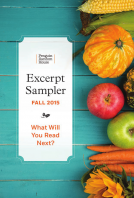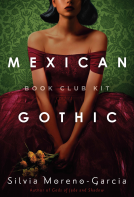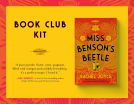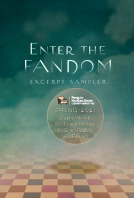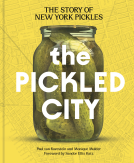
Hypertufa Containers
Creating and Planting an Alpine Trough Garden
by Lori Chips
This title was previously available on NetGalley and is now archived.
Send NetGalley books directly to your Kindle or Kindle app
1
To read on a Kindle or Kindle app, please add kindle@netgalley.com as an approved email address to receive files in your Amazon account. Click here for step-by-step instructions.
2
Also find your Kindle email address within your Amazon account, and enter it here.
Pub Date Jul 31 2018 | Archive Date Jul 16 2018
Talking about this book? Use #HypertufaContainers #NetGalley. More hashtag tips!
Description
Hypertufa containers—also known as troughs—are rustic, striking, versatile, and perfect for small, Alpine plants. A mix of cement, perlite, peat, and water, they are simple and affordable to make at home. In Hypertufa Containers, Lori Chips details everything you need to know to make your own troughs and successfully garden in them. This hardworking book includes step-by-step instructions and color photography for making hypertufa containers in a variety of shapes and sizes. Plant portraits include growing and cultivation information, along with potting tips.
Available Editions
| EDITION | Other Format |
| ISBN | 9781604697063 |
| PRICE | $24.95 (USD) |
| PAGES | 256 |
Average rating from 13 members
Featured Reviews
I'm a fanatical gardener and spend a lot of time trying to figure out ways to improve our outdoor living space. Unfortunately I have to do so on a budget. Any techniques which look great and save cash on the ridiculously expensive heavy containers in the garden centres are perfect for me.
Hypertufa fits the bill. Author Lori Chips has written a clear, concise, and beautifully photographed book on sourcing and creating weatherproof hardscaping for the garden. The book contains instructions for choosing supplies, construction techniques, weathering containers and troubleshooting.
Roughly the first 25% of the content is given over to straight introduction to the material, tutorial for building and creating molds and working with hypertufa to create trough containers.
The next 25% covers soil mixes, garden siting, and other materials (real tufa stone, for example) for the alpine rock garden. This is a complete and well written guide to the special needs and cultivation requirements of alpine plants.
Another 20% is given over to plant selection and planting styles. There are so many lovely pictures of different cultivars and a lot of surprising juxtaposition which I wouldn't have otherwise expected (scabiosa sitting happily with lewisia and sempervivums all jostling one another side by side). One thing which struck me about most of the pictures in the book is how exuberantly healthy everything looks. The plants don't just seem to be existing, they're clearly thriving .
There's a fair amount of general garden wisdom and experience as well as style and cultivation advice which can be applied to a lot of other situations than just the selection and building of an alpine or other rock garden. The author is clearly experienced and writes clearly and with humor and insight.
The book also includes a good glossary, bibliography and links for further reading. I love books which turn me on to other books.
This is an unusual book. It's DIY manual, a really solid book on choosing and growing alpines, a pretty darned good look at planting styles and a picture book inviting a closer look at some often misunderstood and maligned plants.
Beautifully written and high quality useful instruction.
Four and a half stars.
Available in ebook and paperback format, anticipated release date: 1st Aug, 2018.
 Stephanie N, Reviewer
Stephanie N, Reviewer
Hypertufa is a manmade version of natural tufa rock. Tufa is a type of limestone, and it’s great for containers since the plant roots grow into the rock. Hypertufa borrows some of the growing attributes of tufa, is lightweight and fun to work. It consists of various aggregates mixed with Portland cement.
One of the aggregates is peat moss, which is somewhat controversial since it’s essentially non-renewable. Peat bogs are damaged when the peat moss is removed. That’s the only reservation I have about this book – the fact that it advocates using this substance. However, a quick bit of research online and I discovered that coir, coconut fibres, make a good substitute. It also negates the need to add fibre mesh since the stringiness of the coconut helps prevents cracks spreading, if ever they start to form in the trough. By all accounts it should work well in hypertufa and I’ll be using it for my troughs which I’ll be making as soon as we get out of the minus temperatures here in central France!
Troughs are wonderful in any garden, large or small. Container gardening is truly one of life’s great joys. This books goes over how to create your own unique troughs using ready-made moulds or fashioning your own. It explains how to work with sand moulds, how to achieve certain shapes of trough and surface effects. You learn how to cure and finish off the troughs.
There’s advice on how to create the perfect soil mix to use in the troughs, and then how to plant them up and position them in your garden. The author discusses the sorts of plants that will be ideal for troughs, and there’s a handy glossary of terms.
Should you happen to obtain some tufa rock, then there’s also a chapter on how to work with that.
Illustrated with colour photos throughout, there are easy-to-follow and very clear instructions. The book is inspiring and encouraging. I can’t wait to get going.
 Gaby F, Educator
Gaby F, Educator
Hypertufa containers are very attractive design elements for rock gardening. They look very organic, rugged and weathered,almost like natural stone without being as heavy. I have seen containers like this before, but never knew that there is a relatively easy way to make them myself. The only thing about making this containers is that the process is relatively messy and requires basic gardening equipment like a wheelbarrow and a sieve for sifting material, things that long-time gardeners probably already have in their tool shed. In this book, Lori Chips, an experienced professional gardener, shows the reader various ways of creating hypertufa containers and gives numerous examples of plantings that go very well together with this type of containers. I especially like the idea of using hypertufa containers for displaying miniature landscapes planted with succulents . The possibilities are endless, but I would be already very happy with recreating a few of the beautiful designs showcased in this book and integrating them into my garden.
 Amy M, Librarian
Amy M, Librarian
Hypertufa Containers by Lori Chips is a great book of getting started with making hypertufa pots. This book has excellent photos of tools to use, ingredients needed, ideas for container designs, and recommendations for plants to go in the pot. I've made hypertufa pots before, though not as large as the ones in the book, and this book really covers everything you need to do the projects.
 Leyla J, Reviewer
Leyla J, Reviewer
This is a fabulous book, one that will be dipped into quite often. Not only does it explain the principal of the original trough garden, but explains how to make a series of container, which will become your trough gardens. Suitable for not only alpine plants, but lots of other plants suitability are also explained as well as designing and planting your own original trough garden.
This book will grab you, and as a coffee table book, will be of interest to all who browse within its pages.
Hypertufa containers are planting structures made of a mixture of cement, perlite, peat, and water. Easily constructed (although a bit messy), they are a good alternative to the purchase of heavy and expensive ceramic pots. And they are more visually appealing than plastic containers.
The author effectively explains how to build these pots. She gives many examples and photographs. I feel confident that I can do this process now.
 Reviewer 446033
Reviewer 446033
Amazing artwork in the garden! This is a reference book for hypertufa containers. The tutorials are easy to understand with nice pictures. I loved the creatives ideas that Lori shared.
 Rosa S, Educator
Rosa S, Educator
I remember reading about hypertufa and making a pot about 20 years ago - so it was great to be reminded of the simple process of creating a plant container. The rough look, the natural colors, and the flexibility of size and shape make this a worthwhile DIY.
Though the idea is not new, it's still fun. Clear instructions and good illustrations will put you on the way to your own creative garden. Give it a try! This book will help you figure it out.
 LynnDell W, Librarian
LynnDell W, Librarian
Thanks to NetGalley and Timber Press for the opportunity to read and review Hypertufa Containers by Lori Chips. Hypertufa containers or troughs are made from cement, peat moss, perlite and fiber mesh and they are frost-resistant and meant to bring miniature alpine plants up close for better viewing. Photos and detailed instructions and information give everything needed to create your own hypertufa containers. The only thing missing is your imagination and supplies! A list of categorized plants is included along with a glossary and zonal information. Helpful and creative-4 stars!
 Catlin P, Reviewer
Catlin P, Reviewer
If you ever get the urge to create your own containers for your garden, this is a great resource. The author, Lori Chips, describes her extensive training in creating hypertufa containers from some of the best experts. Her introduction to hypertufa and its contents is complete and there are detailed instructions for construction with lots of photos. I do wish there were a few more close-ups in some areas (e.g., burning off the mesh fibers--what do they look like?) The book also contains a section on types of soil to use in the containers, as well as a significant section on types of plants and designs for your containers. I'd consider this an excellent resource for making hypertufa for those who already have some exposure to it, but I think the beginner would benefit from attending a workshop or class first where they can see how this is done.
 Reviewer 151918
Reviewer 151918
I first read about homemade fake stone pots and pavings decades ago in the garden writings of Vita Sackville-West. I have remained interested, particularly in paving stones, although my experiments have been few and far between. Hypertufa is a cement and stone composite substitute for natural rock and Ms. Lori Chips tells us how to make it and use it for alpine gardening.
Ms Chips is fascinated by alpine plants. Alpines, with their shallow root systems, are commonly planted in troughs – shallow, poorly-drained containers used for plants requiring dryer shallow soils. Once troughs were actual stone, but for a century or more they have been made from cement mixtures that mimic stone. These mixtures are traditionally colored and reinforced with peat, but they can also be dyed with cement colorant.
So "Hypertufa Containers: Creating and Planting an Alpine Trough Garden" is three books in one. Mostly it is about alpine gardening. Then it is about how to choose, plant, arrange and tend specific alpine plants in troughs. Finally it assumes the gardener is creative and wants the garden troughs in more interesting shapes and colors than can be found in the garden store. Making containers at home is lots cheaper too.
The book is a wealth of information. Ms Chips' writing is ponderous, but it doesn't matter. She freely shares knowledge gleaned over decades as a professional horticulturist – like why plastic drop cloth is better than plastic wrap as a liner. You will learn lots from reading.
Readers who liked this book also liked:
Silvia Moreno-Garcia
Historical Fiction, Literary Fiction, Sci Fi & Fantasy
Rachel Joyce
Historical Fiction, Literary Fiction, Women's Fiction
Publishers Lunch
General Fiction (Adult), Nonfiction (Adult), Teens & YA
Brian Soonho Yoon
Children's Nonfiction, Crafts & Hobbies
Sam Morrison
Children's Nonfiction, Crafts & Hobbies, Outdoors & Nature
